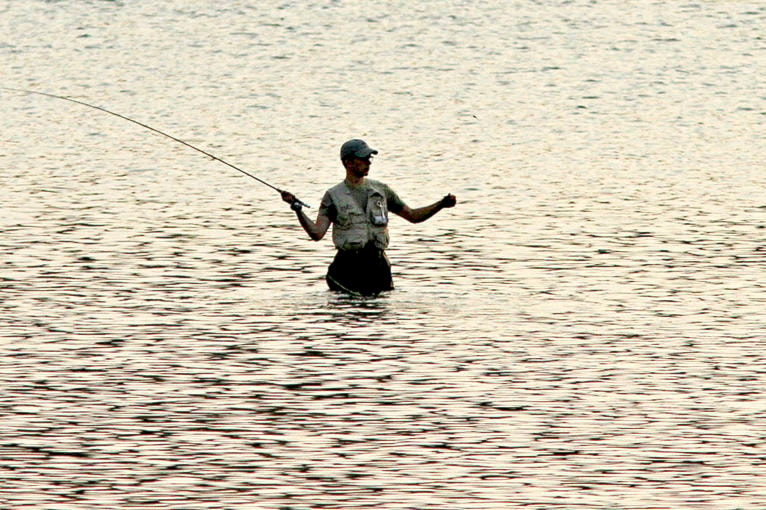Citing unreliable data from the Tyee Test Fishery, the Gitxsan Hereditary Chiefs are opposing the opening of recreational salmon fishing in the Skeena Watershed. In a press release Aug. 8 the chiefs said the fishery is ‘closed’ to all recreational salmon harvests.
“[We] view all fisheries data gathered from the Tyee Test Fishery as unreliable during the emerging salmon crisis that threatens all Skeena watershed salmon stocks,” the release stated.
Hereditary Chief Cliff Sampare (Simogyat O’yee) said the Gitxsan feel the action is supported by the Supreme Court’s Delgamuukw Case, a ruling in part that granted the Gitxsan Aboriginal title on the land based on evidence of oral histories.
However, because the Gitxsan are still in treaty negotiations, Sampare said the federal government feels justified to exclude the Gitxsan from meaningful involvement in natural resource decisions.
Anyone found fishing on Gitxsan territory, Sampare said, will be viewed as a trespasser and asked to leave.
“I’m telling the government right now, we have the legal authority to do this. We’re asserting our rights, our governance, our structure. We have a Supreme Court ruling that recognizes that; it’s the governments that don’t recognize it.”
Last week, the Department of Fisheries and Oceans (DFO) opened the recreational fishery Aug. 7 on many parts of the Skeena River and its tributaries to recreational sockeye, pink and coho fishing. The move followed pre-season fears that returns would be at record lows this year, falling far short of the 800,000 recreational threshold and even the First Nations fishery threshold of 600,000 — a self-imposed restriction up from DFO’s 400,000 target. The numbers from the Tyee Test Fishery however reached well over one million as of Aug. 1.
RELATED: Sockeye return estimate on Skeena nearly triples
A representative from the Tyee Test Fishery, which is operated by DFO, did not respond to an interview request by presstime Monday afternoon.
In an email response to Black Press a DFO spokesperson said the Gitxsan action will not affect their decision to keep the fishery open.
“The Gitxsan Hereditary Chiefs’ recent closure is not a DFO closure and will not be enforced by DFO fishery officers. However, anyone thinking of fishing in the area should be aware of the potential for conflict.”
Sampare stressed that their position is a non-violent action and hopes neighbouring First Nations, fishers and economic interests, such as tourism, will join their opposition to the fishery.
For the past three years he claims 90 per cent of Gitxsan members have abstained from fishing until the numbers return.
“The Gitxsan governance is very strong with conservation,” Sampare said. “Sustainability is really important to us. When they opened up the recreational fishery, I thought, ‘Oh, my golly. There are major spawning grounds in our territory and if they keep opening it up to recreational fishing it’s gone.’”
The Gitxsan announcement follows actions last June when the chiefs also forbade recreational fishing in Gitxsan territory, in which all fishers holding DFO recreational permits would be viewed as trespassers.
That declaration followed with seven other Skeena First Nations’ push for discussions with DFO and the province for the full closure of freshwater and marine recreational fisheries impacting Skeena chinook.
The group said DFO’s decision to allow for a chinook marine recreational fishery appeased the sporting community but did not live up to DFO’s obligation to protect the interests of First Nations.
As was the case then, the Gitxsan Hereditary Chiefs now appear to be acting alone with their intent to stop recreational salmon fishing in their territory.
newsroom@thenorthernview.com
Like us on Facebook and follow us on Twitter
